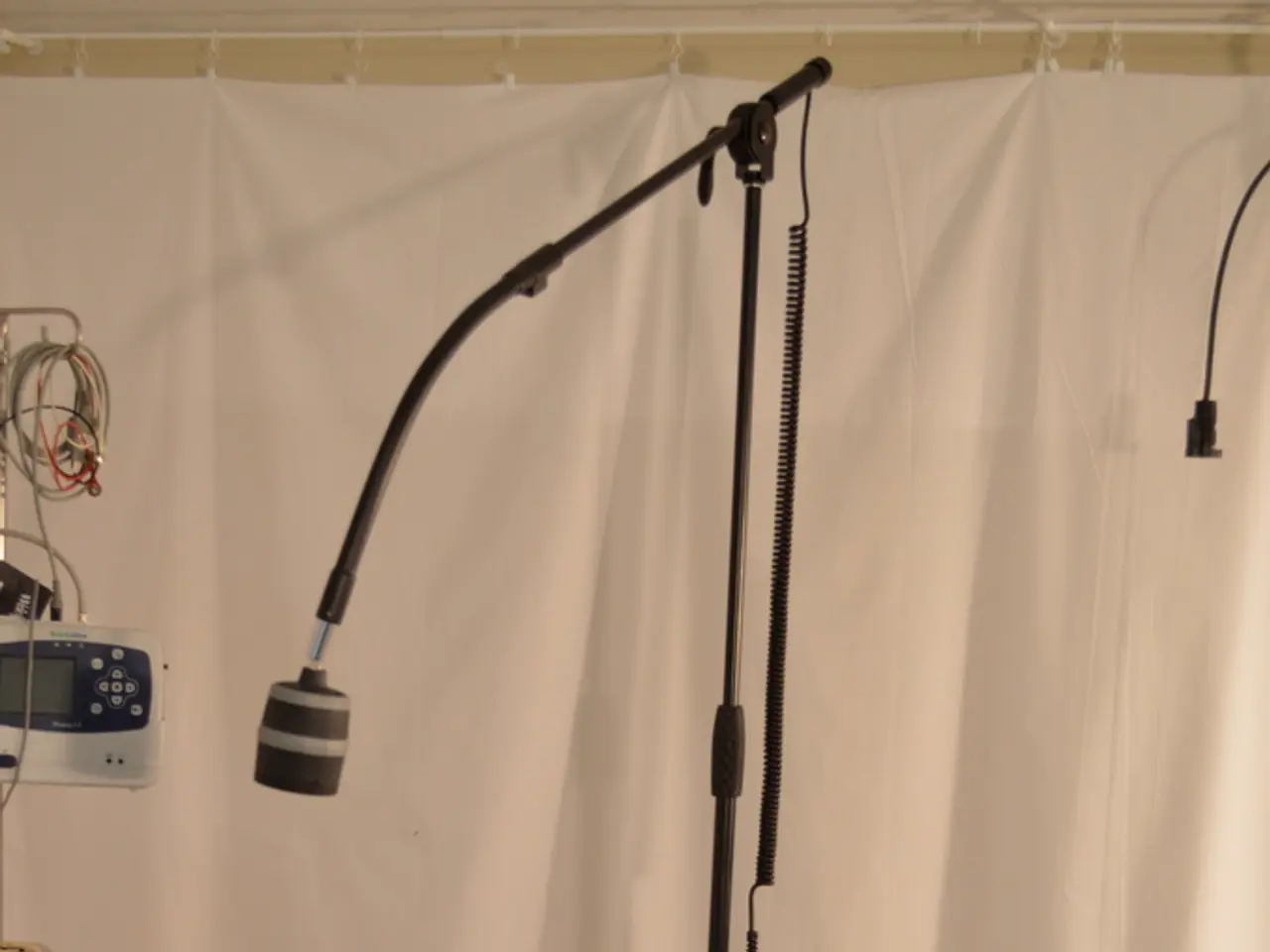The Function of a Microphone in a Home Studio: Exploring Its Significance
Microphones, the unsung heroes of communication, play a pivotal role in enhancing our interaction with technology and aiding daily activities. These devices work by converting sound into electrical signals, measuring sound pressure levels, and understanding audio frequency characteristics.
In our everyday lives, microphones can be found in various forms. They are integral components in phones, voice-activated assistants, and applications for recording memos. During conversations, especially in large rooms or virtual meetings, microphones ensure clarity and audibility by amplifying your voice.
However, common issues with microphones such as poor sound quality, odd tonality, and feedback can be resolved through various means. Ensuring secure connections, correct phantom power, aligning condenser microphones, adjusting the placement of directional microphones, or using soundproofing can help maintain optimal sound quality.
Microphones for Live Events
For live events, dynamic microphones are generally preferred due to their durability, ability to handle high volumes, and resistance to feedback. Top picks include the Shure SM58, Shure Beta 58A, and Sennheiser e835, each offering robust construction and excellent sound quality.
Microphones for Studio Recordings
In a studio setting, condenser microphones are often favored for their sensitivity and ability to capture a wide range of frequencies. Notable choices include the AKG C414 XLII, Shure SM7B, and Blue Microphones Condenser Models, each offering clarity, detail, and versatility.
Comparison
| Feature | Live Events (Dynamic) | Studio Recordings (Condenser) | |-----------------------------|----------------------------------------------------------------|----------------------------------------------------------------| | Durability | Robust, handles high volumes and rough handling | More sensitive, requires careful handling | | Sensitivity | Less sensitive to background noise | High sensitivity for capturing nuance | | Frequency Response | Moderate (typically 50Hz–15kHz) | Wide (20Hz–20kHz+) | | Feedback Rejection | Excellent resistance to feedback | May require additional measures to reduce feedback | | Usage | Live performances, loud instruments | Studio vocals, acoustic music, spoken word |
Other Microphone Types
In addition to dynamic and condenser microphones, there are other types like electret condenser microphones, which are lightweight, affordable, and high-sensitivity, ideal for more sensitive recording needs or compact device integration.
Understanding various microphone types, such as directional, omnidirectional, cardioid, and bidirectional microphones, is crucial when choosing the right one for your needs. Consider whether you need a microphone with phantom power or if the device has a built-in preamplifier to enhance the audio signal.
Modern Microphone Innovations
Modern microphone technology continues to evolve, with manufacturers experimenting with hybrid technologies, combining features from traditional and digital microphonic technologies. Laser microphones offer a unique method of capturing audio by detecting vibrations on flat surfaces, perfect for discreet environments or special applications.
Digital and USB microphones are redefining how we record and produce sound, offering superior sound quality, minimizing noise interference, and enabling easy connectivity. In a computer setup, microphones enable clear audio for video conferencing, gaming, and voice commands, improving the overall user experience.
In conclusion, the choice between dynamic and condenser microphones depends on whether you prioritize durability and feedback resistance for live events or sensitivity and detail capture for studio recordings. Regular microphone care includes cleaning with a soft, dry cloth, storing in a dry place, regularly checking connections and cables for wear, and using a pop filter to reduce plosive sounds and protect the microphone from saliva and moisture.
- A home studio, a space where music creation and recording take place, often houses condenser microphones for their ability to capture a wide range of frequencies.
- Incorporating digital recording software into a home recording setup can provide an accurate representation of sound and improve the overall production quality.
- While on a quest for the perfect home recording setup, don't forget to consider the use of gadgets like guitars, pianos, and home recording equipment, which significantly contribute to the music production process.
- In contrast to dynamic microphones, which are preferred for live events, technology has given rise to electret condenser microphones, offering compact and high-sensitivity options for various recording needs.
- In today's digital age, Sci-fi movies no longer hold a monopoly on exciting audio innovations; laser microphones, for instance, are capable of capturing audio by detecting vibrations on flat surfaces.
- Aside from music and communication, microphones play a crucial role in enhancing the audio experience for video games, where the quality of vocals and other audio elements significantly impact the overall gameplay experience.
- To supplement your vocal performances, a home studio or any recording environment would benefit from the use of various microphone types, such as omnidirectional microphones for capturing sounds in all directions, and cardioid microphones for focusing on sound sources in front of them.




